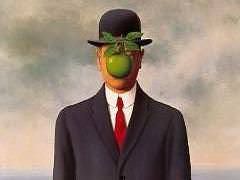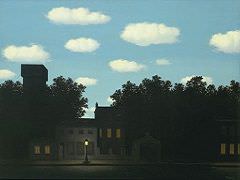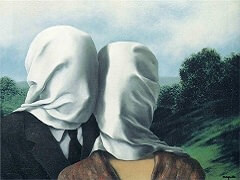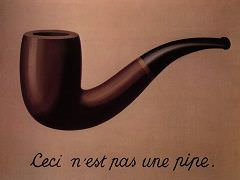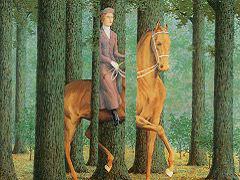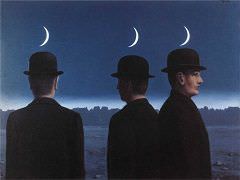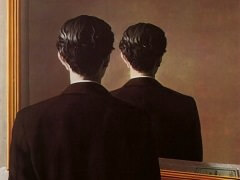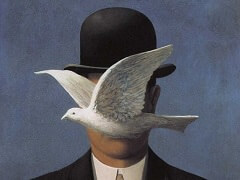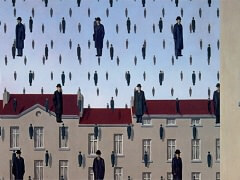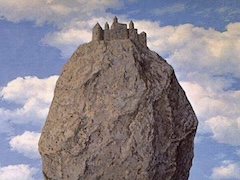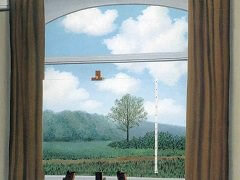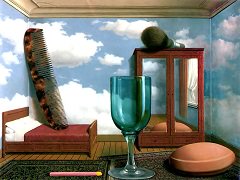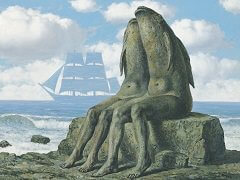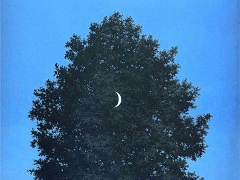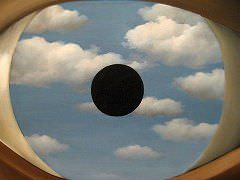The Empty Picture Frame, 1934 by Rene Magritte
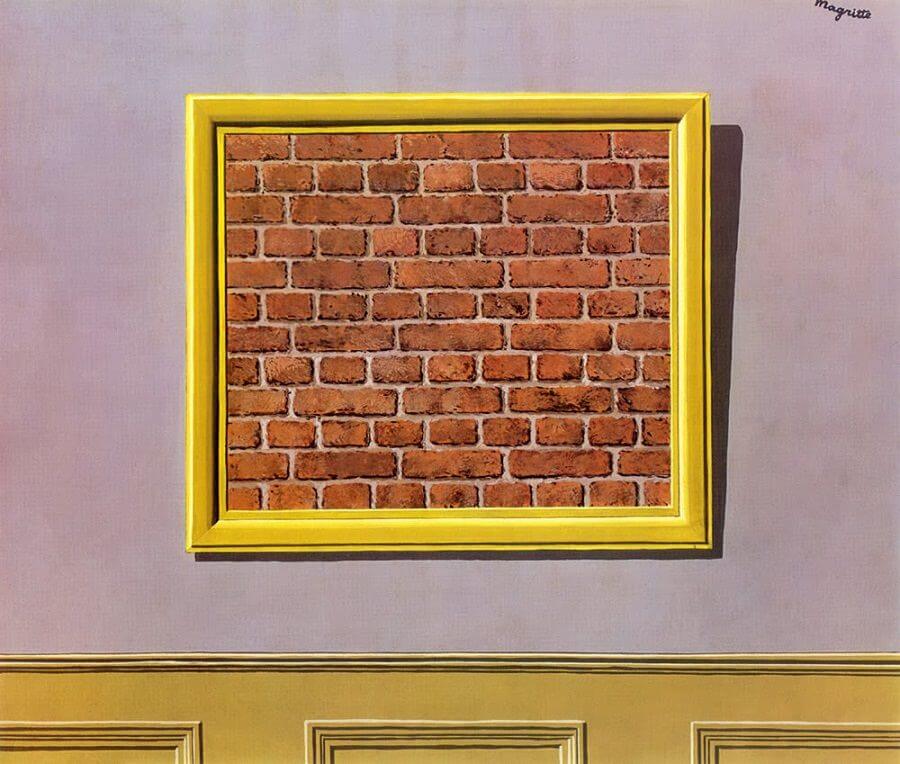
What in ordinary language might have been called The Empty Painting, since all there is to see is a frame, is nevertheless entitled Landscape, the title plate taking the place of the missing
landscape. Thus Magritte does not show us a landscape but a still life with a rifle and a picture frame.
The work illustrated here seems to be a painting within a painting which also shows us the wall of a room with a wainscot. There is scarcely any depth, only the wainscoting and the shadow of the
frame. Thus we are given no knowledge of distance, height, or breadth. The painting is not empty, however, but consists of a framed brick wall, so real and so minutely detailed that we do not
doubt that it is the outer wall of the gray inner wall. The cutting-off of this wall, without any foreground, makes the room seem strange and vague. It is the same sort of cutting-off that
Magritte employs, for instance, in The Waterfall and in other canvases where a painting within a painting occurs.
The simultaneous appearance of a fragmentary inner wall and a framed outer wall, all within a single picture, is the reason why the presence of the inner and outer wall within a single space
seems absurd and ephemeral. In a few instances Magritte used the irrational appearance of a brick wall in relation to a tree.

